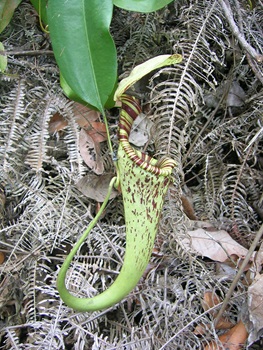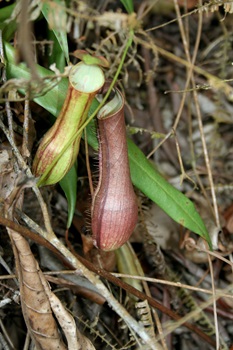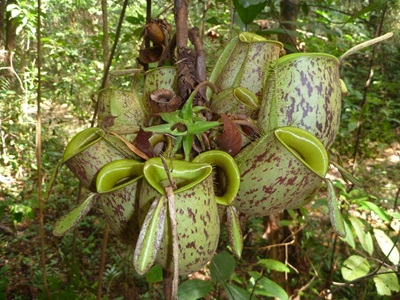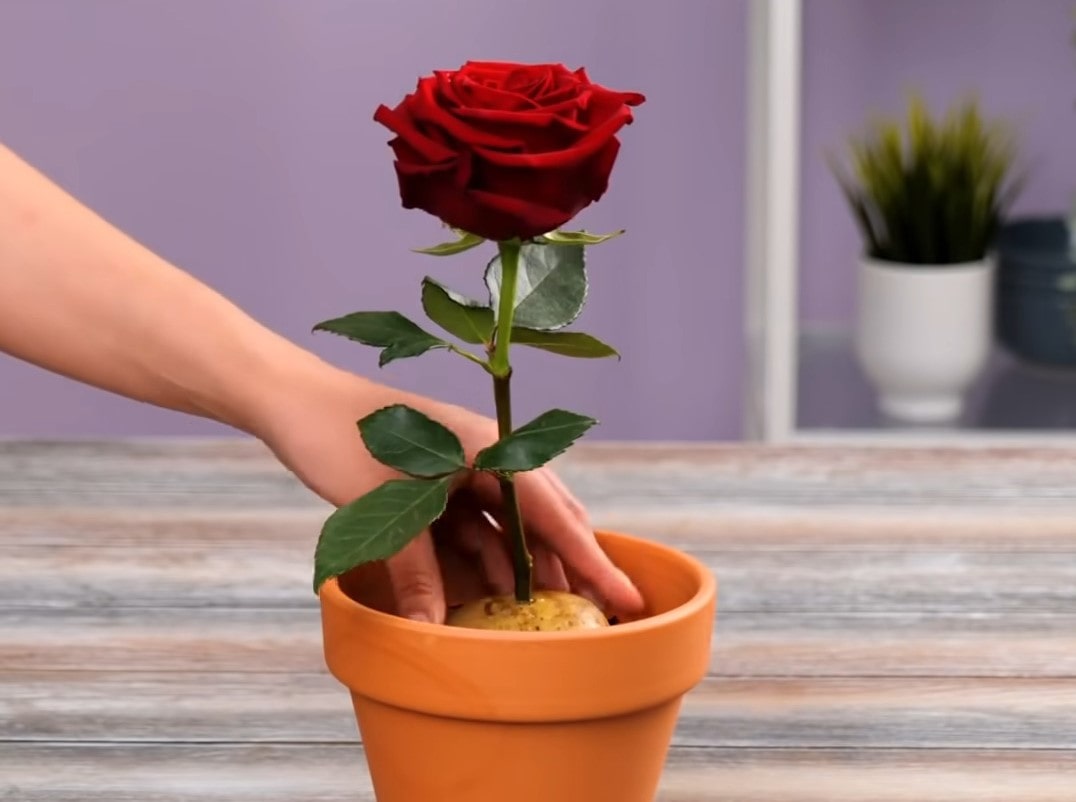Pitcher Perfect
Pitcher Plants come in many shapes, sizes and even colours. The best part is that there are actually three native species you can find right here on our island. Find out more:
Raffles’ Pitcher Plant

Photo credit: Boo Chih Min
The Raffles’ Pitcher Plant (Nepenthes rafflesiana) is a vine that grows to a length of 10 m or more, producing long tendrils, reaching over 1.1 m in length, that clamber over trees and other plants. It is a native species that is currently vulnerable, threatened with habitat loss.
It does not have a stalk and its leaves have a leathery texture. The leaf tips terminate in coiling tendrils, which under ideal conditions are modified into prey-catching pitchers. These pitchers are partially filled with rainwater and enriched with digestive enzymes secreted by glands on its waxy internal walls.
The plant has the largest pitchers in Singapore and was first discovered in 1819 by Dr William Jack, a Scottish botanist and surgeon with the East India Company, when he accompanied Sir Stamford Raffles to Singapore.
Slender Pitcher Plant

Photo credit: Patricia Yap
The Slender Pitcher Plant (Nepenthes gracilis) is a shrub that has slender, elongated pitchers that grow to about 4 to 5 cm high and 1 cm in width. While it is usually light green with fine purple spots on the inner surface, some varities can also be pure dark purple or green with purple spots on the outer surface. This species of Pitcher Plant is the most common and widespread in Singapore as the plant is tolerant of pollution and can grow in a diverse range of soil conditions.
This plant mimicks the smell of flowers, producing a sweet-smelling liquid at the bottom of its ‘cup’ structure. Fooled by the sweet nectar scent, the insect prey falls in and is unable to climb out of the slippery inner walls of the plant. Enzymes secreted by a special gland quickly digest the fallen insect and the nutrients are absorbed by the plant’s walls.
Narrow-lid Pitcher Plant

Photo credit: Ang Wee Foong
The Narrow-lid Pitcher Plant (Nepenthes ampullaria) is a herbaceous to semi-woody climber. Its slender srem bears many shot branches with rosettes of leaves at intervals in the lower parts of the stem.
It is the least common amongst the three Nepenthes species native to Singapore, and can be identified by its pitchers with backward-face lids, which do not cover the pitcher’s mouth. Along with the Raffles' Pitcher Plant, this plant was also discovered in 1819 by Dr William Jack. Today, you may find it growing in Kent Ridge Park, the Central Catchment Nature Reserve and the Western Catchment forests.
Learning More
If you are heading to our green spaces, do the right thing and be socially responsible. Keep to not more than five persons in a group. Always wear a mask except when you are engaged in strenuous exercise or when consuming food, drink or medication.
Before heading down to our parks, please visit SafeDistParks.nparks.gov.sg for the latest updates on visitorship levels.
Visit NParksSG, our refreshed YouTube Channel that serves as a one-stop repository for close to 300 video resources. It also provides you a platform for existing and future digital outreach including DIY gardening and related crafts, virtual tours of our green spaces, and livestream events.
Interested to learn about the flora and fauna found in Singapore? Visit NParks Flora & Fauna Web here.
If you like what you read, follow us on Facebook, Instagram and Telegram to get the latest updates.





Have views or comments on this article? Let us know via this form. If you would like to give us feedback on any other areas relating to our parks and gardens, please submit via https://www.nparks.gov.sg/feedback